Älmhult, Home of IKEA in Sweden
Zagan the motorhome is where a large proportion of Brits find themselves on a grey Saturday afternoon, in the car park at Ikea. Only this isn’t any old Ikea, it’s the Ikea Museum (N56.55186, E14.13329) in Älmhult, Sweden.
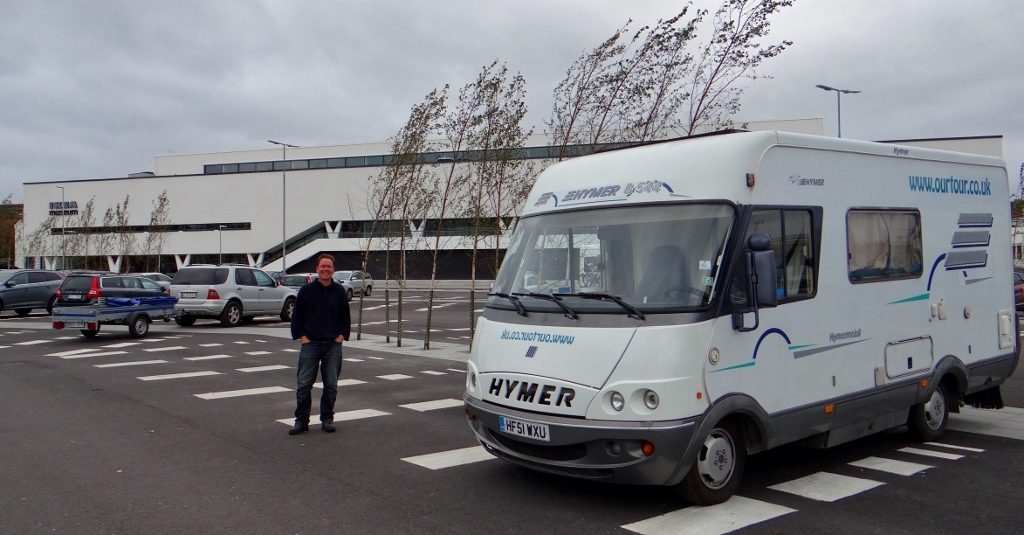
Sleeping outside the Ikea Museum, Almhult Sweden
Last night we both slept like logs in the silent car park in Gränna and woke this morning to grey skies. A quick check of the forecast and we can safely say – winter is here. At night the temperature is around 4°C now. While it’s always snuggly warm in Zagan, because we leave the gas heating on low (for Charlie of course), it’s still the time to put on the winter bedding. After half an hour the bed was made and I just wanted to crawl back into it – you can’t beat fresh bedding, but there was driving to do first. The weather forecast wasn’t looking good, so rather than freeze Charlie’s paws off in Gothenburg, we came to a team decision to head south.
We jumped on the virtually empty E4 and didn’t stop until one of us needed a wee. Luckily the rastplats (rest place) we stopped at was marked on our rastplatskarta as having a ‘Tomming Latrin’ which means behind one of the doors is a loo just for emptying your motorhome toilet cassette. Never ones to pass up an opportunity, as you never know when the next one will be, Jay emptied our loo before we set off again. Our target was Älmhult and while we were still some 40 km away we spotted a bright red sign for it at one of the motorway junctions. Looking at the map and consulting with satnav it clearly wasn’t right, so we ploughed on.
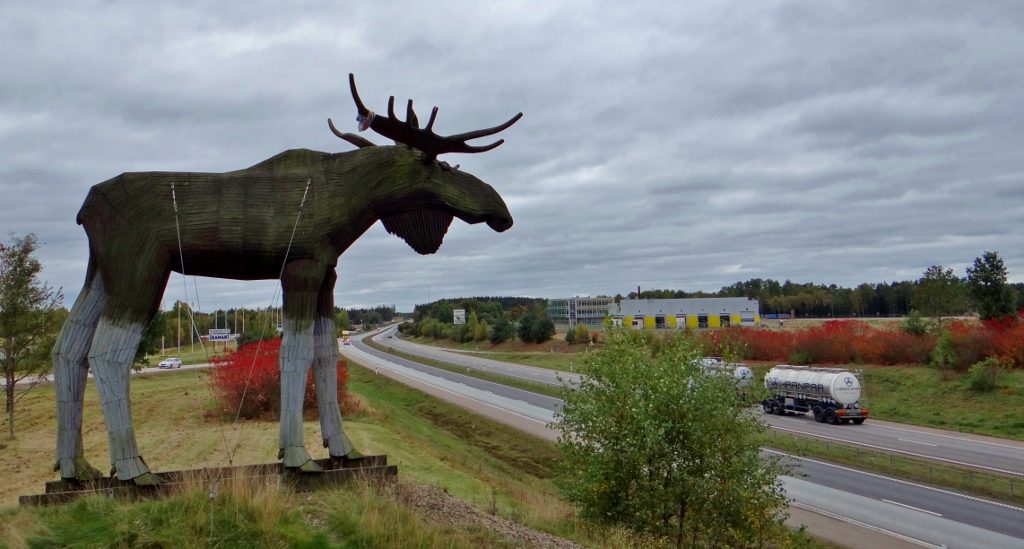
Reaching the correct junction the town’s name was crossed out, and another bright red sign told us to carry on along the motorway. Hmmm, something strange going on here. On our map there is only one road to Älmhult, the 120, any other route is a very long way around. Reaching the next junction there were more crossed out Älmhult signs, but we figured we’d head for the 120 anyway and see what was happening. The 120 to Älmhult is 26 km long, and before we got onto it another bright red sign told us that the road was closed between Älmhult and another town. Undeterred we carried on. After about 16 km and several more bright red signs telling us the road was shut, we reached the cones telling us the road was indeed shut! Google translating the sign we had a quick discussion as to if we could get away with being ‘valid traffic’, but thought we had better not. Satnav was told of the roadblock and recalculated us with a warning of unpaved roads ahead.
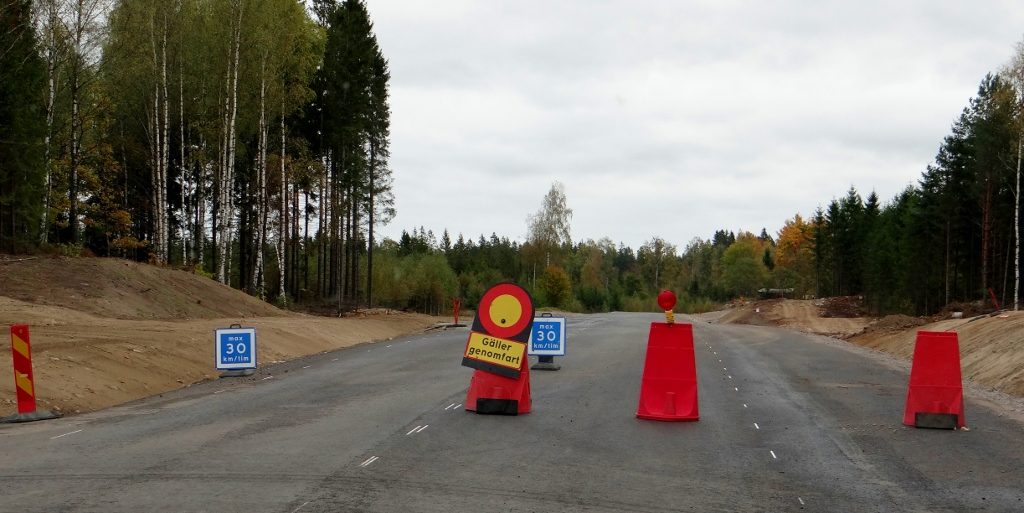
That’s the end of the road then, can’t say they didn’t warn us!
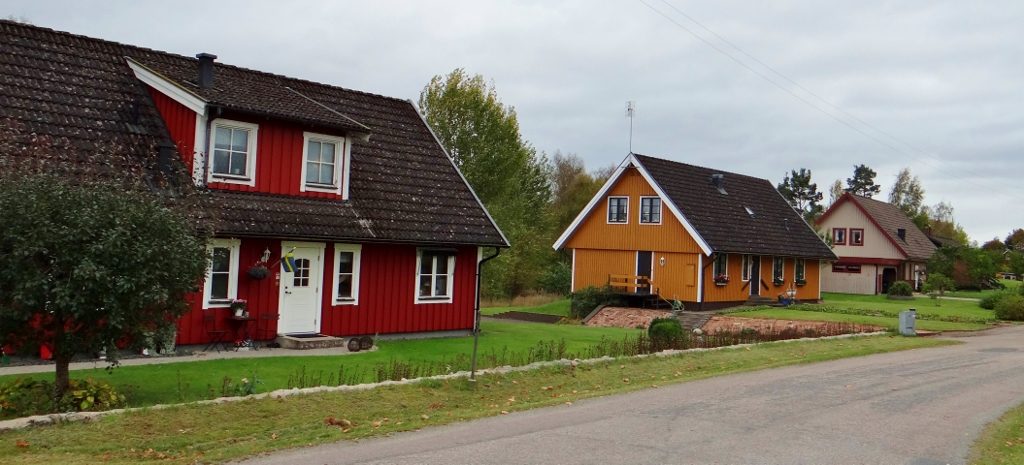
Our diversion through small villages of multi-coloured wooden houses
After the narrow roads of northern Norway, and the dirt tracks we drove in Slovenia, we were ready for anything. We needn’t have worried though as we stayed on the tarmac and, after a short detour that many locals were also taking, we arrived in Älmhult just 20 minutes later than we would have. (20 important minutes to Charlie was it was now 20 past lunchtime). As we drove in we passed a huge Ikea distribution centre, the Ikea test lab and a building called Ikea of Sweden. Parking up opposite the Ikea Hotel (I kid you not) we headed on into the museum and once inside we asked if it was OK to stop in the car park for the night, the poor receptionist looked a tad bemused but smiling said it shouldn’t be a problem – to us that’s an OK!
I’ll confess now that I was the one who suggested we come here, as always with trips to Ikea I’m not sure how keen Jay was (although his niece works at our local store, so we do like to go in and annoy her from time to time). When we returned to work after our two years of touring Europe I got a job with a company called Ikano Insight, who are part of the Ikea family of busineses. While there I was given information about the story of Ikea and its founder Ingvar Kamprad and it intrigued me. Ingvar sounded like a great, tenacious and forward-thinking chap and I was keen to learn more.


The store in 1958 before it was expanded
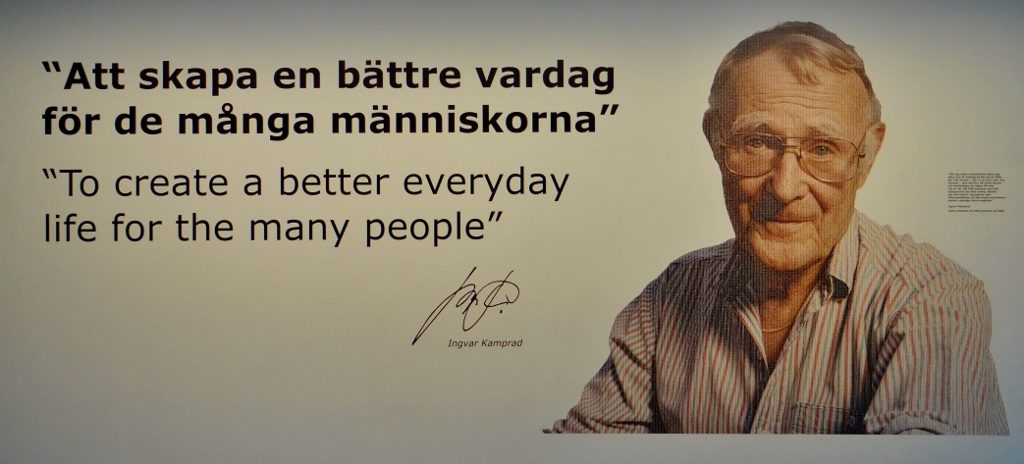
Ingvar Kamprad…
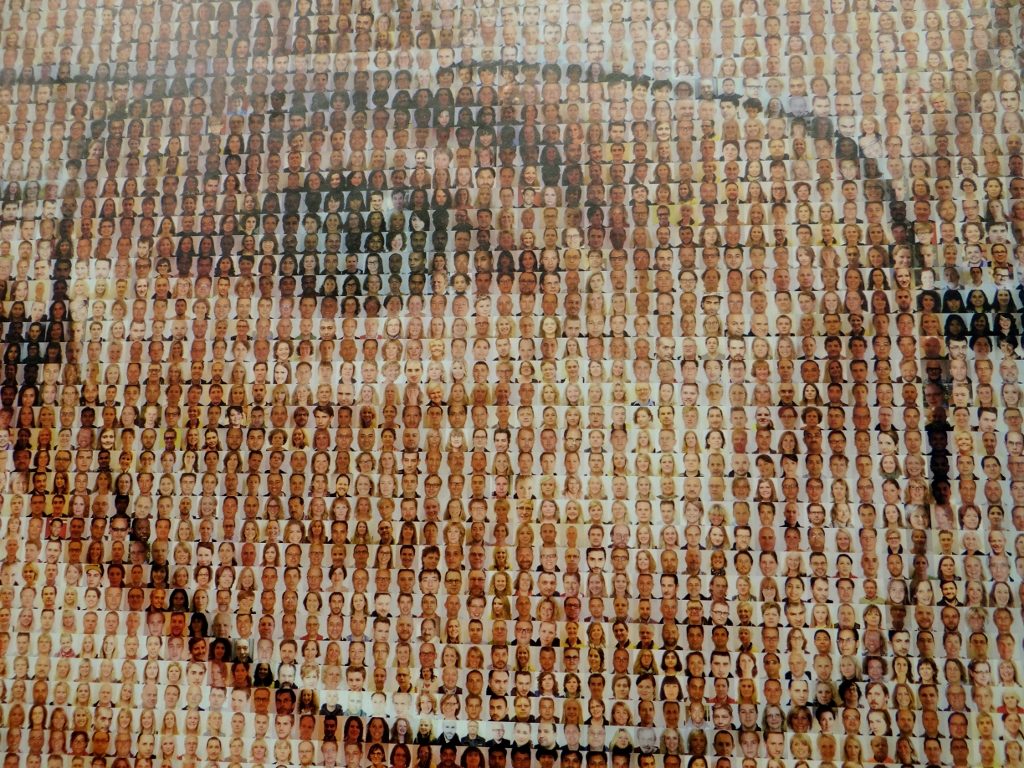
… made up of the faces of thousands of Ikea co-workers
The museum is situated in the first ever purpose-built Ikea store, which opened in 1958, although the building looks way more modern than that. The store closed in 2012 and the museum only opened its doors on 30 June this year. Inside we discovered all about the background of Sweden in the late 19th and early 20th century. These times were hard for the Swedes and many sought a better life elsewhere with one in three Swedes emigrating to (1.5m to America). Those who stayed learned to make do and mend things, and it is into this background that Ingvar Kamprad was born. Even today, as a billionaire, he wears second hand clothes and gets his hair cut when abroad in developing countries. We learned how as a boy Ingvar would buy a bumper box of matches and sell them as individual boxes for a profit, or fish in the local lake for pike then ride his mother’s bicycle around the areas of the town where there wasn’t a lake and sell his catch there. From the very start he was a entrepreneur.
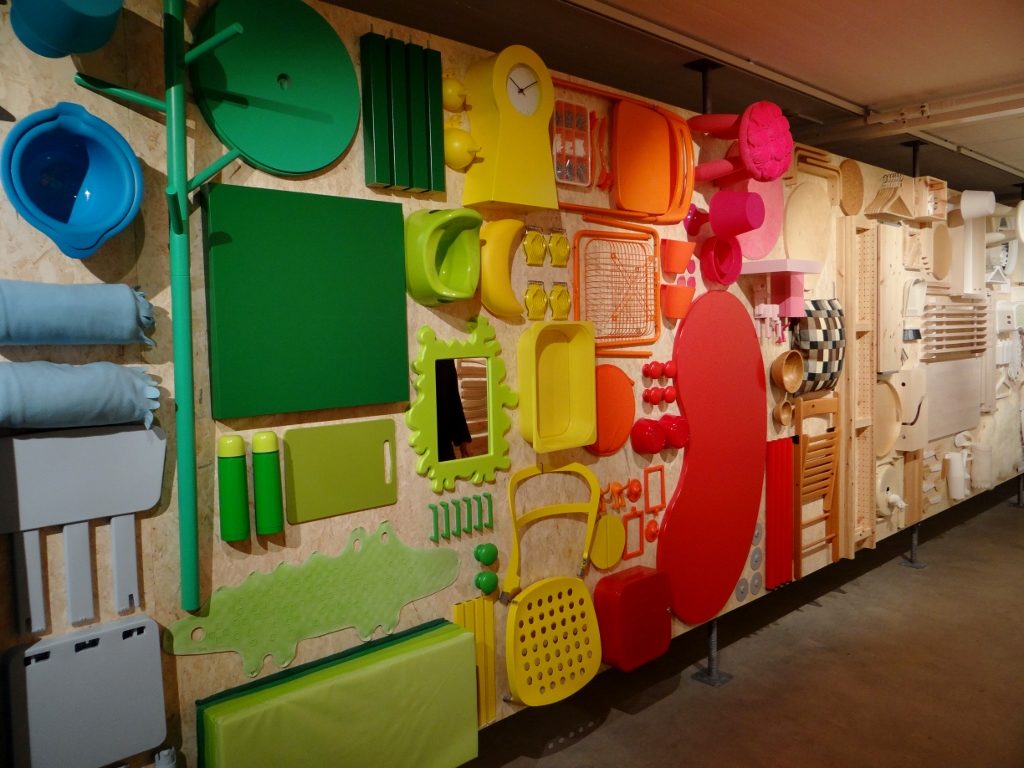
Got one, had one, need one!

Almhult is the little red love heart
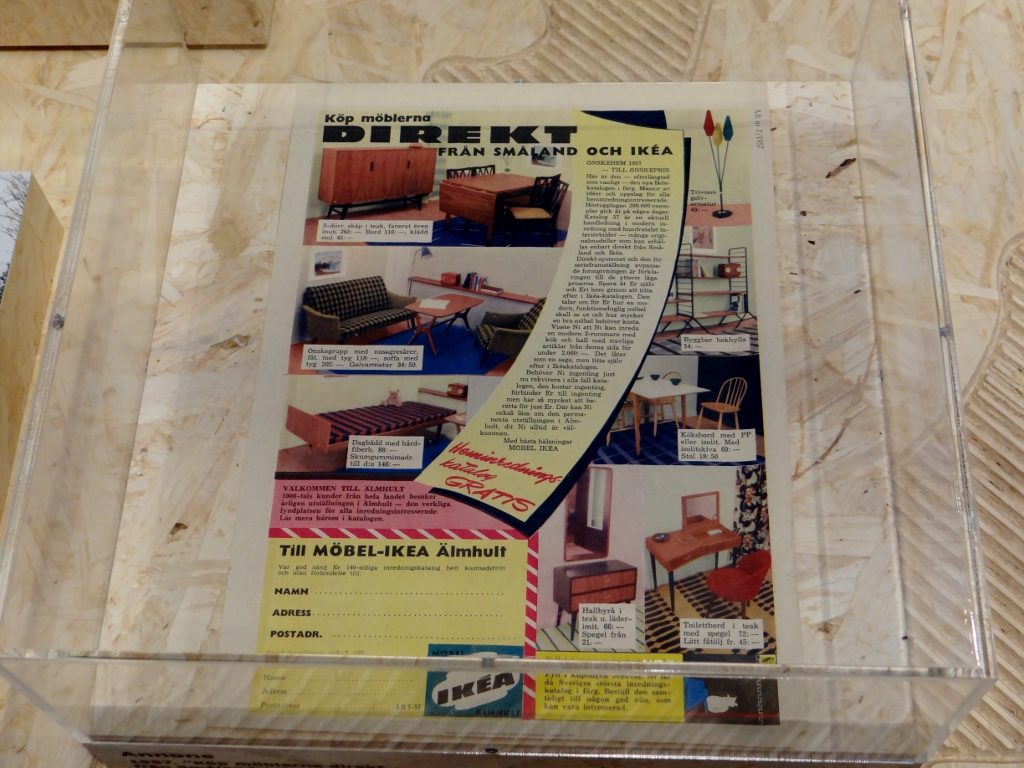
First Ikea catalogue
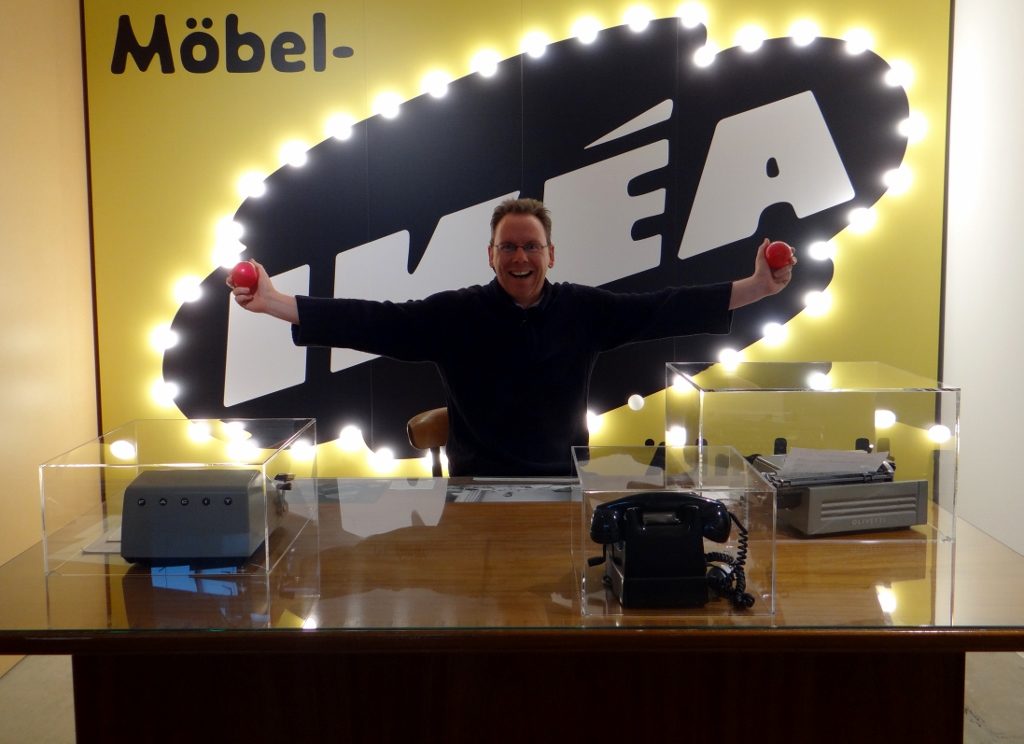
Jay at Ingvar’s first desk – hope he doesn’t mind
The top floor of the museum takes us through a timeline of Ikea history. The name Ikea being made up of Ingvar’s initials, the first initial of the farm he grew up on and the first initial of the parish it was in – Ingvar Kamprad Elmtaryd Agunnaryd. We learned about the struggles faced when other Swedish furniture manufactures forced their suppliers to boycott Ikea and not sell them any stock, or prevented him from booking places at trade fairs. Unable to sell just using catalogues and adverts in the paper, Ikea set up a show room in an old wooden building with the showroom on the first floor. Expecting around 100 people, Ingvar and his co-workers had to pray the floor wouldn’t collapse when over 1000 people turned up.

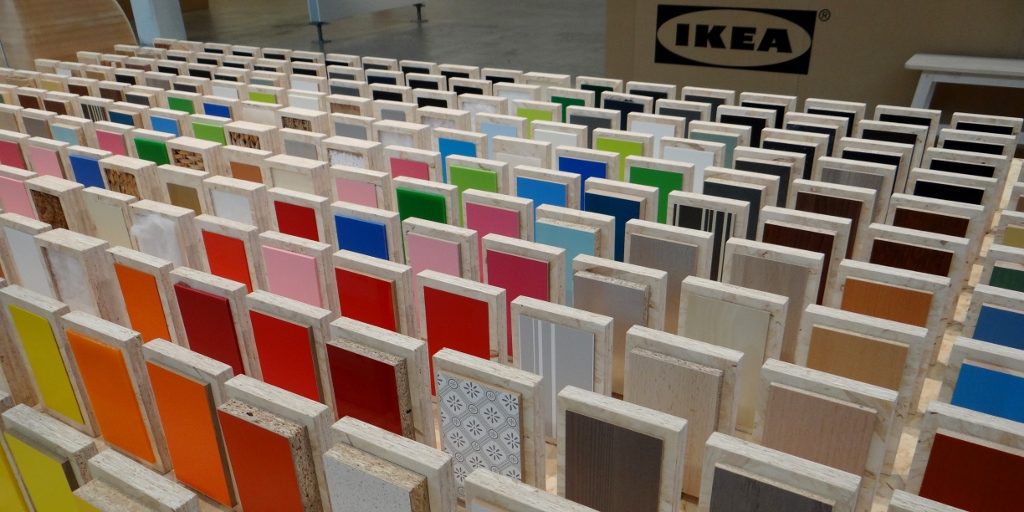
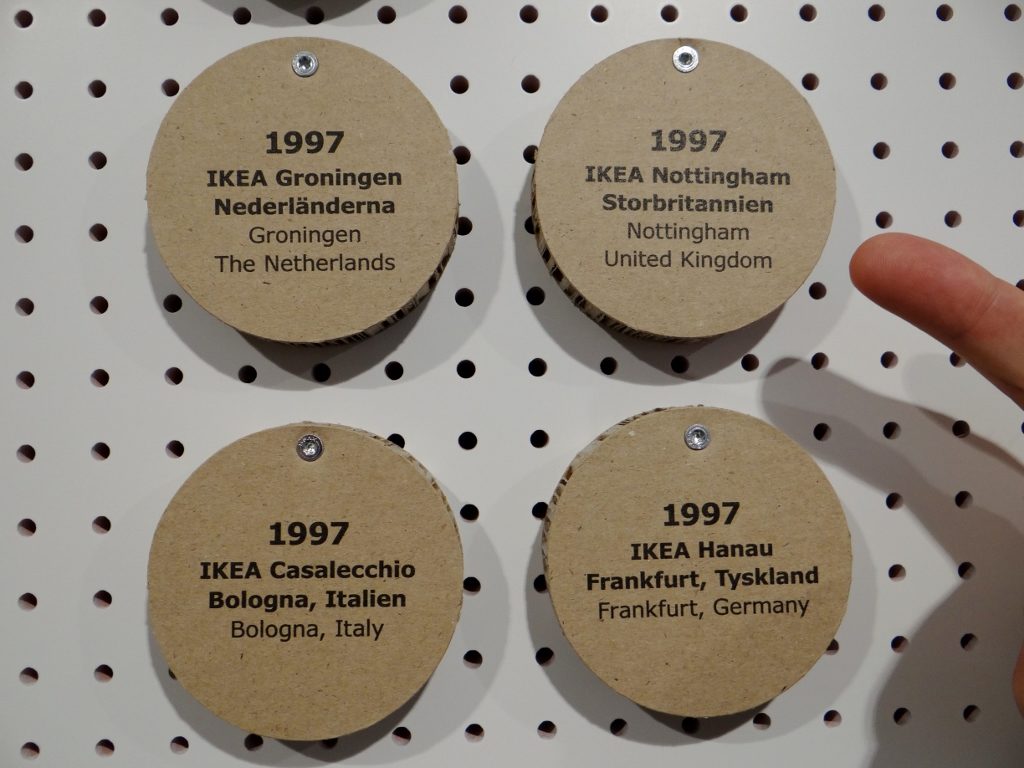
Our local store (15 min walk from our house and which we know very well!) opened in 1997
In the end, as we all know, the floor didn’t collapse, Ikea won out and went on to be a world-wide success. Dotted along the timeline were the stores as they were opened and products as they were introduced. Many of the products from the past wouldn’t look out of place in homes today, and many of them are still on sale – would you believe the Poang chair is 40 years old!

Poang’s first cover shot in 1977

Could this be the new space saving idea from Ikea – Furniture on the ceiling?
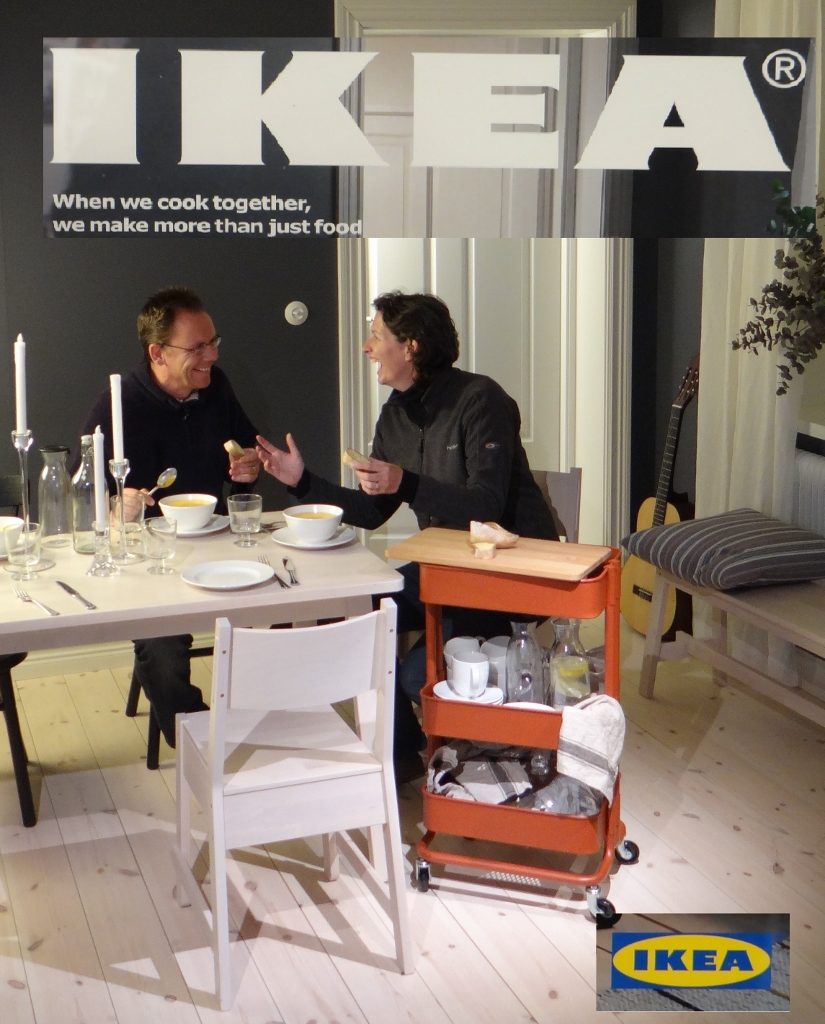
The equipment wasn’t working to get ourselves on the cover of the latest catalogue, so we had to make up our own – seriously grab your new catalogue and check it’s not us on the cover!
After a couple of hours walking around we headed to The Kitchen for some meatballs. The menu on the wall offered meatballs – normal ones with mash and jam, vegetarian ones, fish ones, chicken ones and Italian style, but by now we just didn’t fancy them (or the 70 Sek price tag – about £6.50). Instead we had a quick look around the museum shop, which was souvenirs and some vintage products (for normal Ikea products there’s a store a couple of kilometres away) and headed back to Zagan to scoff some of the huge stash of food we bought yesterday. I don’t think we’ll need another supermarket before we get home as the freezer is packed full again!
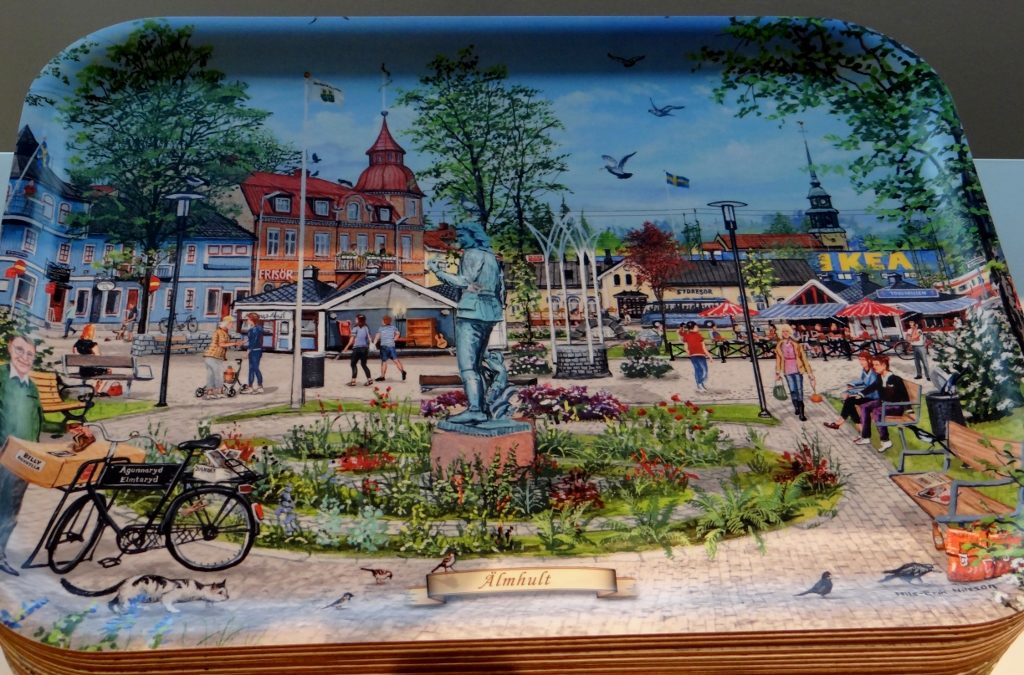
Trays for sale in the museum shop – Ingvar on the left with his bike
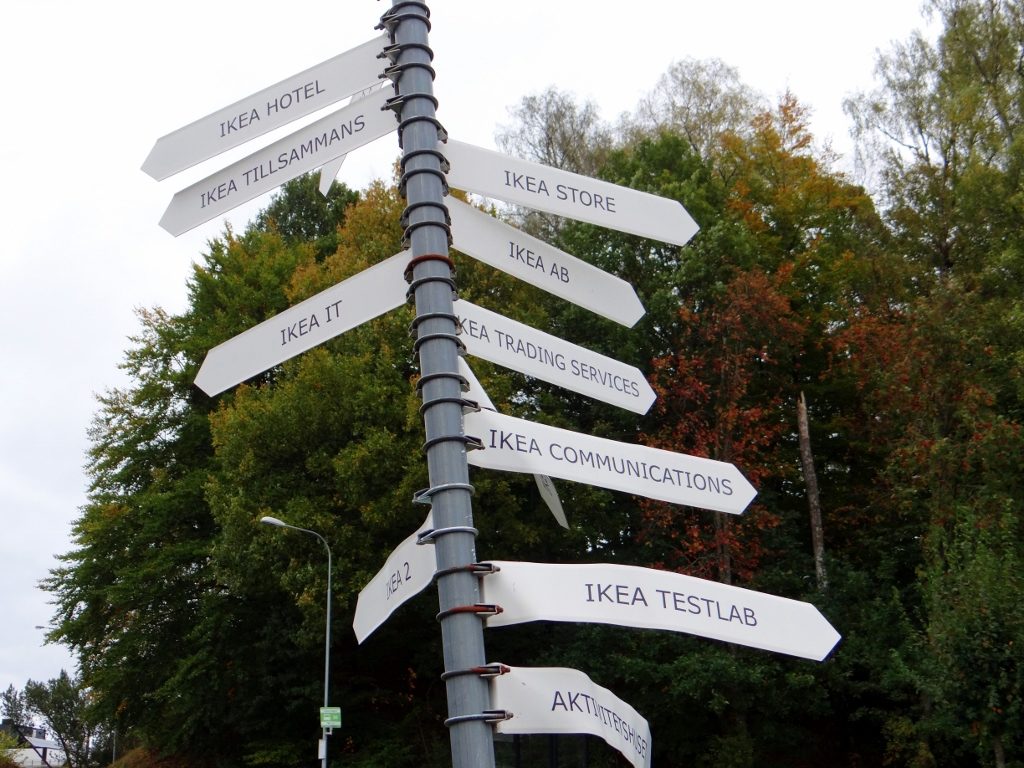
Looks like we are on the IKEA side of town!
After a late lunch we faced the biting cold for a walk around Älmhult. The town centre is on the other side of the railway tracks, everything on the museum side seems to be Ikea related. In the main square we spotted a statue and wandered over to read the sign by it. The statue was of botanist Carl Linnaeus who formalised the modern system of naming organisms. You know, those two latin names you are taught in biology class but instantly forget, except for the black rat which is Rattus rattus! If Ingvar hadn’t started his empire here in the 1940’s I think Älmhult would be a very different place today.
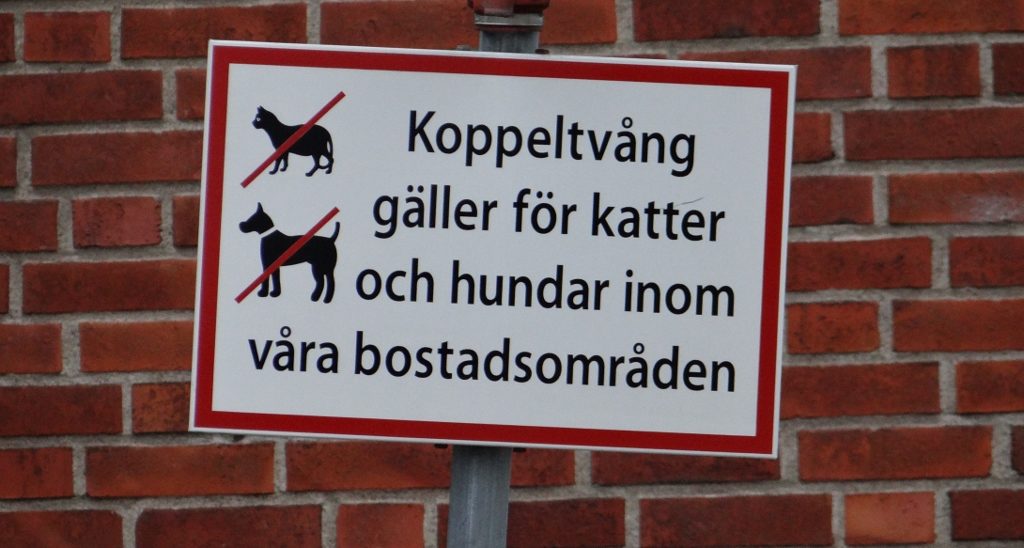
OK, my Swedish is bad, but it looks like it says only cats and dogs on a lead in the neighbourhood?
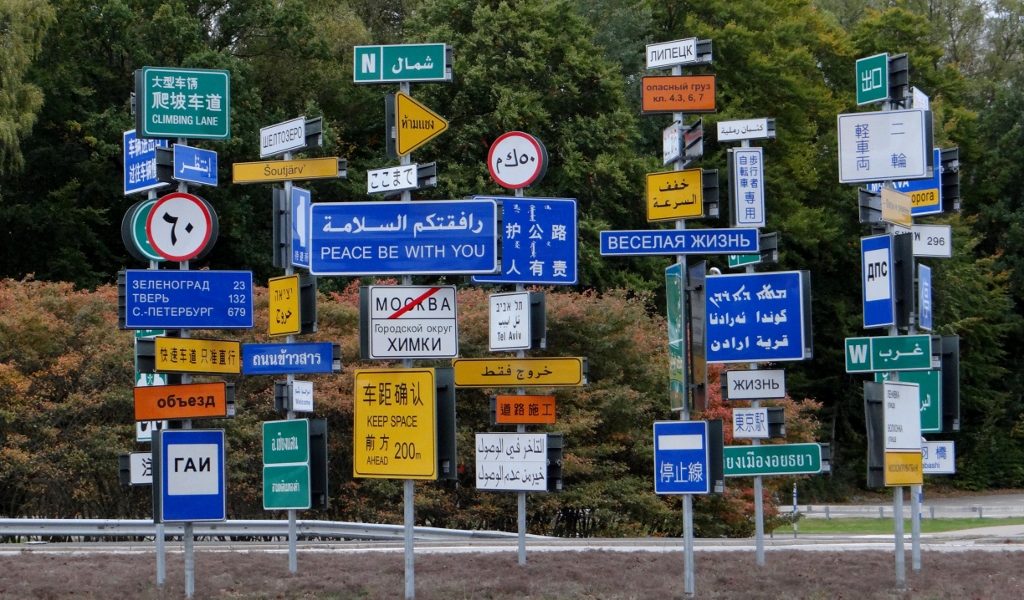
As a car stopped to take a photo of these signs, the car behind honked his horn, not quite peace be with you.

Carl Linnaeus statue in Almhult main square
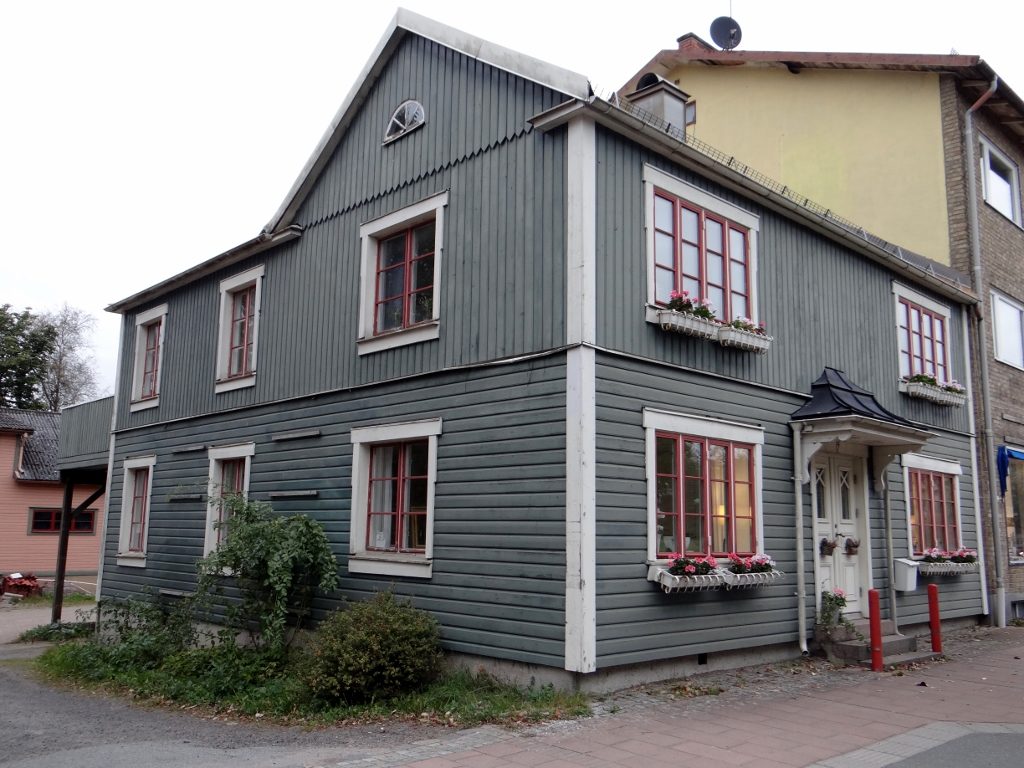
I’ll miss these wooden houses when we leave Scandinavia
Ju x
Bonus pic – spotted on our milk carton this morning, it seems Britpop was big in the year that the milk company launched their cottage cheese range…
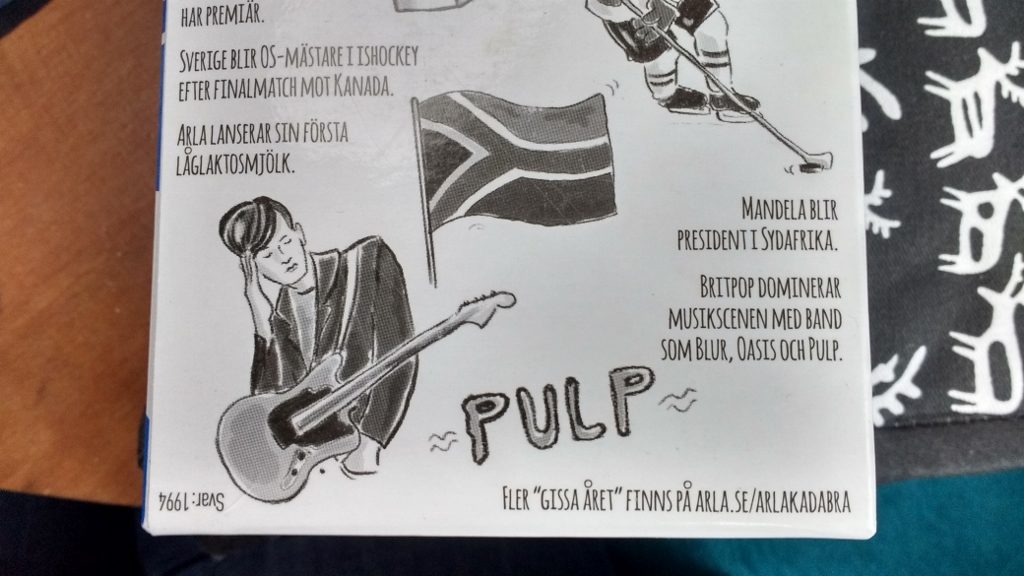
I wonder if Jarvis knows he is on Swedish milk cartons?

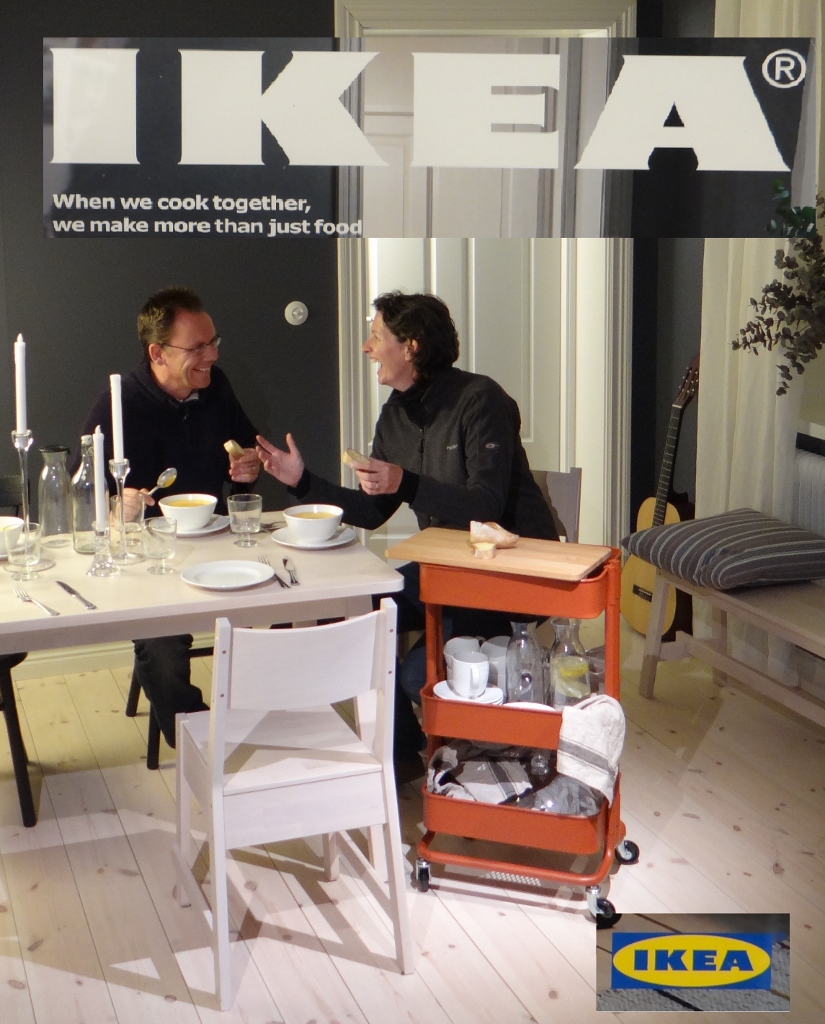


Leave a Reply
Want to join the discussion?Feel free to contribute!